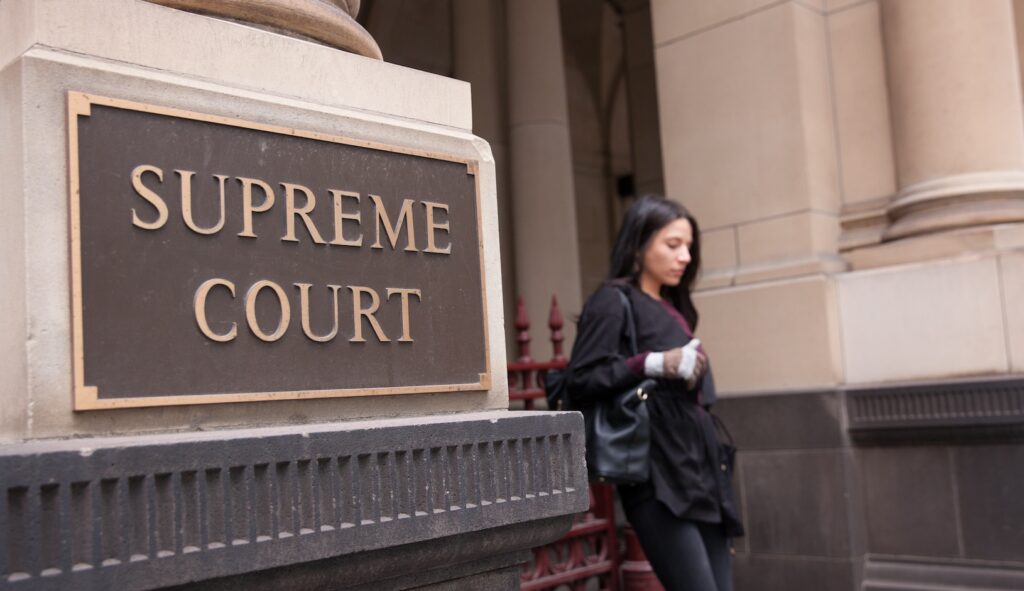Reverse discrimination? SCOTUS takes unusual case on sex discrimination
(The Daily Signal) – The Supreme Court on Friday issued an order granting review in what’s sure to be an incredibly high-profile case on sex discrimination under Title VII of the Civil Rights…

(The Daily Signal) – The Supreme Court on Friday issued an order granting review in what’s sure to be an incredibly high-profile case on sex discrimination under Title VII of the Civil Rights Act, the federal law prohibiting employment discrimination on the basis of sex (among other characteristics).
The Supreme Court will hear the case of an Ohio woman, Marlean Ames, who claims she suffered sex discrimination in her employment because she is—drumroll please—a heterosexual woman. That makes her a member of what the Supreme Court has determined to be a “majority” class of individuals.
Ames filed a discrimination lawsuit against her employer, the Ohio Department of Youth Services, saying she was passed over for a promotion and later demoted in favor of two less-qualified LGBTQ candidates—a gay man and a lesbian woman, respectively. She alleges that she was discriminated against on the basis of both sexual orientation (relating to the lesbian woman’s promotion) and sex (relating to the promotion of the gay man).
Not since its decision in Bostock v. Clayton County (2020) has the court agreed to wrestle head-on with a clash of individual characteristics—sex versus sexual orientation, for example—within employment discrimination law. When those characteristics clash, but the law at issue prevents discrimination against both, what is the court to do?
This past summer, the court issued a per curiam (unsigned) order upholding lower court injunctions in cases challenging the proposed new Department of Education rule on Title IX of the Education Amendments, which would expand the definition of “sex discrimination” in education to include discrimination based on sexual orientation, gender identity, or gender expression. That order, however, did not address the underlying merits of those challenges.
While it is entirely possible, if not likely, that the Supreme Court will eventually address the issue of whether discrimination on the basis of sexual orientation and gender identity fit within the definition of discrimination on the basis of “sex” in the education context, the court will grapple with that issue in the employment context in the Ames case.
The lower court, the U.S. Court of Appeals for the 6th Circuit, affirmed the trial court’s rejection of Ames’ sexual orientation discrimination claim, finding that, as a heterosexual, she is a member of a “majority” group and therefore must prove that her employer was the “unusual employer who discriminates against the majority.”
According to the 6th Circuit, Ames failed to provide sufficient evidence of “background circumstances” necessary to establish discrimination based on her own sexual orientation as a heterosexual. Specifically, Ames was unable to prove that the supervisors who demoted her were part of a minority group (i.e., lesbian, gay, bisexual, and transgender people), or that there was a pattern of discrimination against straight employees by the Ohio Department of Youth Services.
As for Ames’ sex discrimination claim, the court found that while Ames was replaced by a man, the department had provided legitimate, nondiscriminatory reasons for her demotion. The 6th Circuit reiterated that the department had previously addressed the need for Ames’ improved performance and that she had met—but not exceeded—her employee benchmarks. The court concluded that Ames failed to demonstrate that the department’s reasons for not promoting (and eventually demoting) her were insufficient or pretextual.
In a world of increasingly divided victim classes, do straight women get a stake in nondiscrimination protections, even though they are members of a “majority” of Americans? If so, what must they demonstrate to prove employment discrimination?
The Supreme Court will now address and hopefully answer those questions.
In addition to Ames, the court has decided to consider other big-ticket items in cases concerning online pornography and the First Amendment, the constitutionality of a “ghost” gun ban, and the constitutionality of a state law barring gender “affirming” medical procedures for minors.
This term is already shaping up to be one of the most high-profile yet.
Oral arguments in Ames will likely take place early next year and a decision is expected by the end of June.



